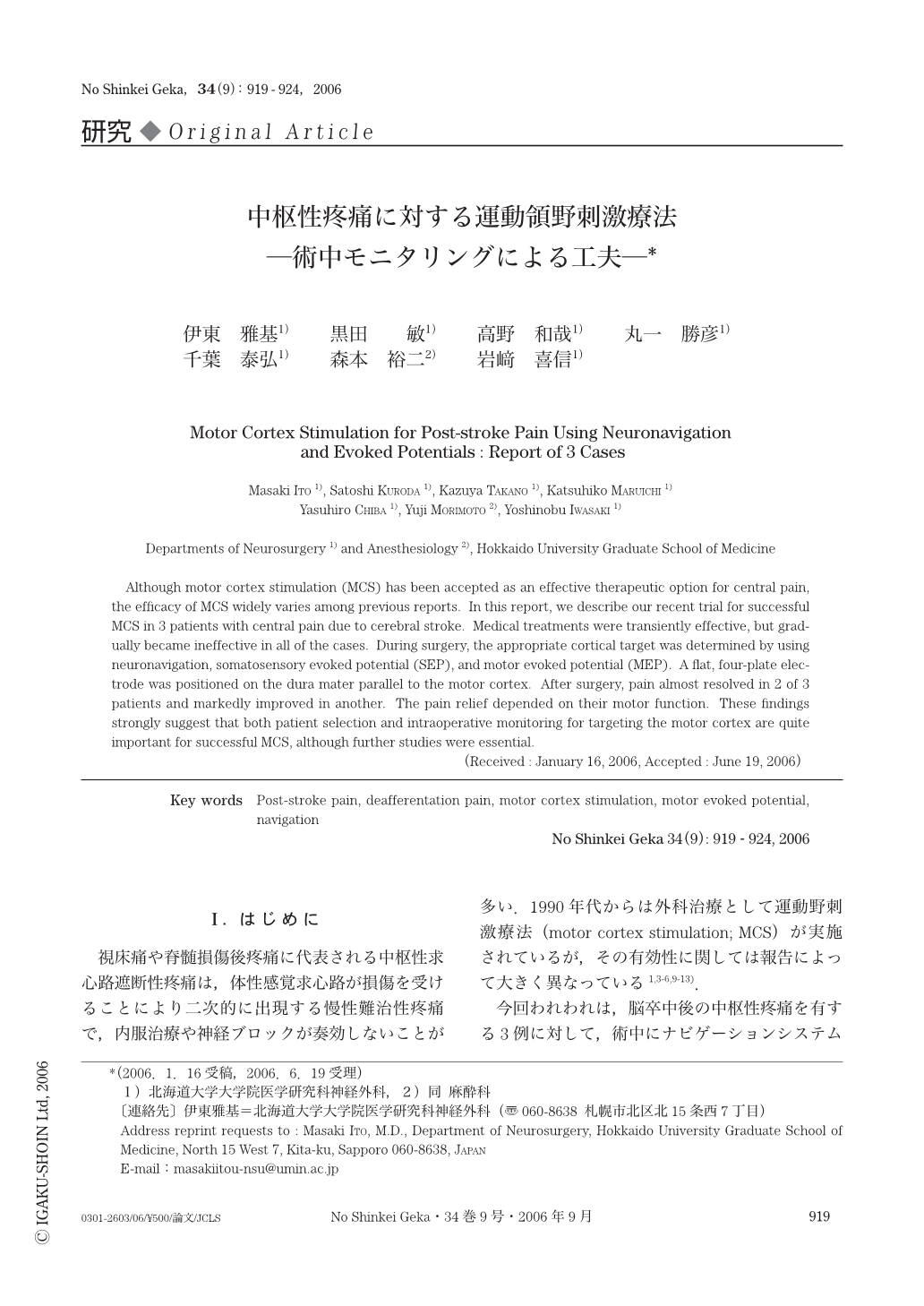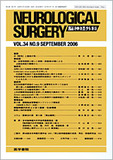Japanese
English
- 有料閲覧
- Abstract 文献概要
- 1ページ目 Look Inside
- 参考文献 Reference
Ⅰ.は じ め に
視床痛や脊髄損傷後疼痛に代表される中枢性求心路遮断性疼痛は,体性感覚求心路が損傷を受けることにより二次的に出現する慢性難治性疼痛で,内服治療や神経ブロックが奏効しないことが多い.1990年代からは外科治療として運動野刺激療法(motor cortex stimulation; MCS)が実施されているが,その有効性に関しては報告によって大きく異なっている1,3-6,9-13).
今回われわれは,脳卒中後の中枢性疼痛を有する3例に対して,術中にナビゲーションシステムや電気生理学的モニタリングを利用して刺激電極の設置部位を決定し,極めて良好な結果を得ることができたので,その手術適応や手術手技を中心に報告する.
Although motor cortex stimulation (MCS) has been accepted as an effective therapeutic option for central pain,the efficacy of MCS widely varies among previous reports. In this report,we describe our recent trial for successful MCS in 3 patients with central pain due to cerebral stroke. Medical treatments were transiently effective,but gradually became ineffective in all of the cases. During surgery,the appropriate cortical target was determined by using neuronavigation,somatosensory evoked potential (SEP),and motor evoked potential (MEP). A flat,four-plate electrode was positioned on the dura mater parallel to the motor cortex. After surgery,pain almost resolved in 2 of 3 patients and markedly improved in another. The pain relief depended on their motor function. These findings strongly suggest that both patient selection and intraoperative monitoring for targeting the motor cortex are quite important for successful MCS,although further studies were essential.

Copyright © 2006, Igaku-Shoin Ltd. All rights reserved.


